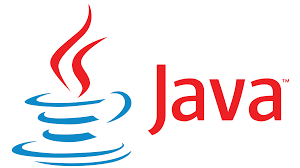JAVA WEB SERVICES
About This Course

Course Overview :
Web services are client and server applications that communicate over the World Wide Web’s (WWW) HyperText Transfer Protocol (HTTP). As described by the World Wide Web Consortium (W3C), web services provide a standard means of interoperating between software applications running on a variety of platforms and frameworks. Web services are characterized by their great interoperability and extensibility, as well as their machine-processable descriptions, thanks to the use of XML. Web services can be combined in a loosely coupled way to achieve complex operations. Programs providing simple services can interact with each other to deliver sophisticated added-value services.
Prerequisties
Course Content
- Overview of Web Services
- Why Web Services?
- Service-Oriented Architecture
- HTTP and XML
- SOAP
- WSDL
- The SOAP Vision
- The REST Vision
- UDDI
- The WS-I Basic Profile
- Security
- Web Services for Java EE
- Hosting Web Services: Scenarios
- Web Services for Java EE
- JAX-WS and JAXB
- Web-Services Metadata
- WSDL-to-Java and Java-to-WSDL Paths
- Provider and Dispatch APIs
- SAAJ and JAXP
- JAX-RS for RESTful Services
- JAXR
- The Java API for XML Binding
- The Need for Data Binding
- XML Schema
- Two Paths
- JAXB Compilation
- Mapping Schema Types to Java
- Java-to-XML Mapping Using Annotations
- Marshaling and Unmarshaling
- Working with JAXB Object Models
- The Simple Object Access Protocol
- Messaging Model
- Namespaces
- SOAP over HTTP
- The SOAP Envelope
- The Message Header
- The Message Body
- SOAP Faults
- Attachments
- Web Services Description Language
- Web Services as Component-Based Software
- The Need for an IDL
- Web Services Description Language
- WSDL Information Model
- The Abstract Model — Service Semantics
- Message Description
- Messaging Styles
- The Concrete Model — Ports, Services, Locations
- Extending WSDL — Bindings
- Service Description
- The Java API for XML-Based Web Services
- Two Paths
- How It Works: Build Time and Runtime
- The Service Endpoint Interface
- Working from WSDL
- Working from Java
- RPC and Document Styles
- One-Way Messaging
- Binary Protocols
- WSDL-to-Java Development
- The @WebService Annotation
- Generated Code
- Scope of Code Generation
- Parameter Order
- More JAXB: Mapping Collections
- More JAXB: Mapping Enumerations
- Applying JAXB Customizations
- Client-Side Development
- Stubs and Proxies
- Generated Code
- Locating a Service
- Invoking a Service
- The WebServiceRef Annotation
- Java-to-WSDL Development
- Generating the WSDL and Schema
- The @WebMethod, @XmlParam, and Related Annotations
- More JAXB: Mapping Inheritance
- Controlling the XML Model
- Controlling the WSDL Description
- JAXB Customizations with @XmlJavaTypeAdapter
- Exception Handling
- SOAP Faults vs. Java Exceptions
- Mapping Faults from WSDL
- Mapping Exceptions from Java
- JAX-WS Exception API and Handling
- Client Exception Handling
- JAX-WS Best Practices
- Which Way to Go?
- Interoperability Impact
- Portability Impact
- Polymorphism in Web Services
- Web Services as Java EE Components
- Lifecycle Annotations
- Context Interfaces
- Metadata
- Abstract and Concrete Model Metadata
- Defaults
- Annotations
- webservices.xml and web.xml
- Best Practices and Pitfalls
- Provider and Dispatch APIs
- Stepping Down
- The @WebServiceProvider Annotation
- The Provider Interface
- Implementing a Provider
- The @ServiceMode Annotation
- JAXB Without WSDL
- Integrating JAXP
- The Dispatch Interface
- Building Clients
- The SOAP with Attachments API for Java
- The SAAJ Object Model
- Parsing a SOAP Message
- Reading Message Content
- Working with Namespaces
- Creating a Message
- Setting Message Content
- Relationship to the DOM
- Message Handlers
- Handling SOAP Headers
- Handlers and Handler Chains
- Configuration by XML or Annotation
- MessageContext and SOAPMessageContext
- Processing Model and Patterns
- Logical and Protocol Handlers
- Client-Side Handlers
- Handling Binary Content
- The WS-I Attachments Profile
- Using base64Binary
- MTOM and XOP
- JAX-WS Support
- Configuration by XML or Annotation
- Client-Side Support
- SAAJ Support


